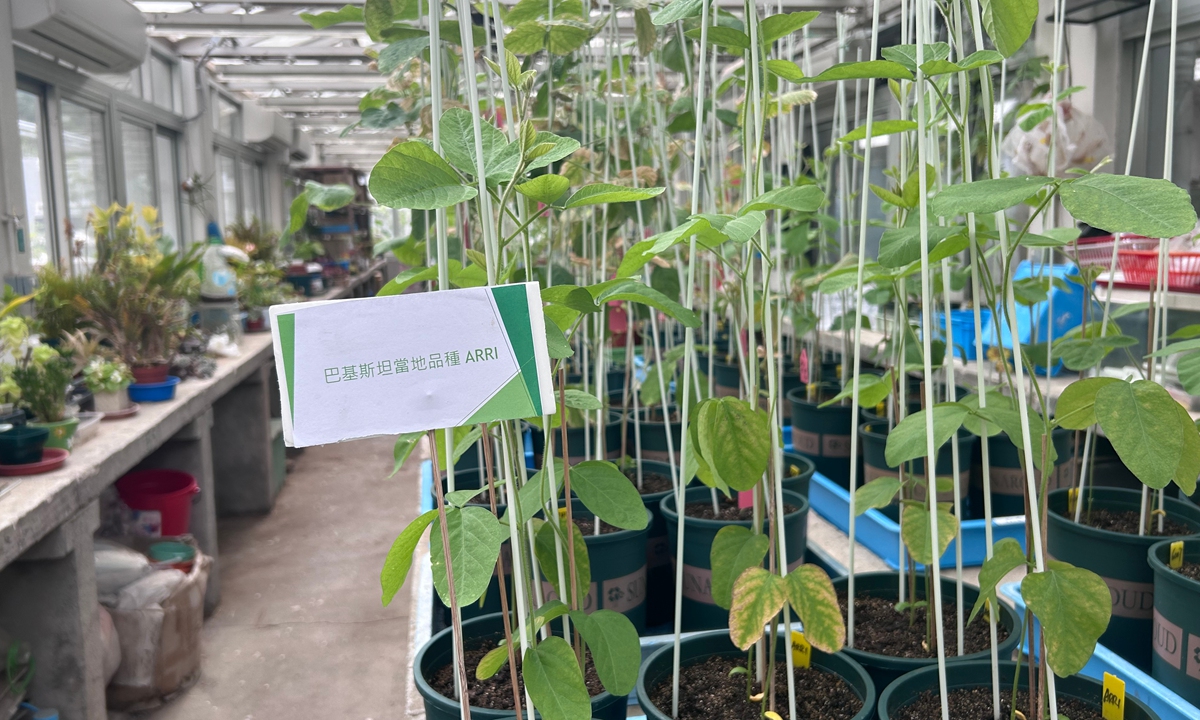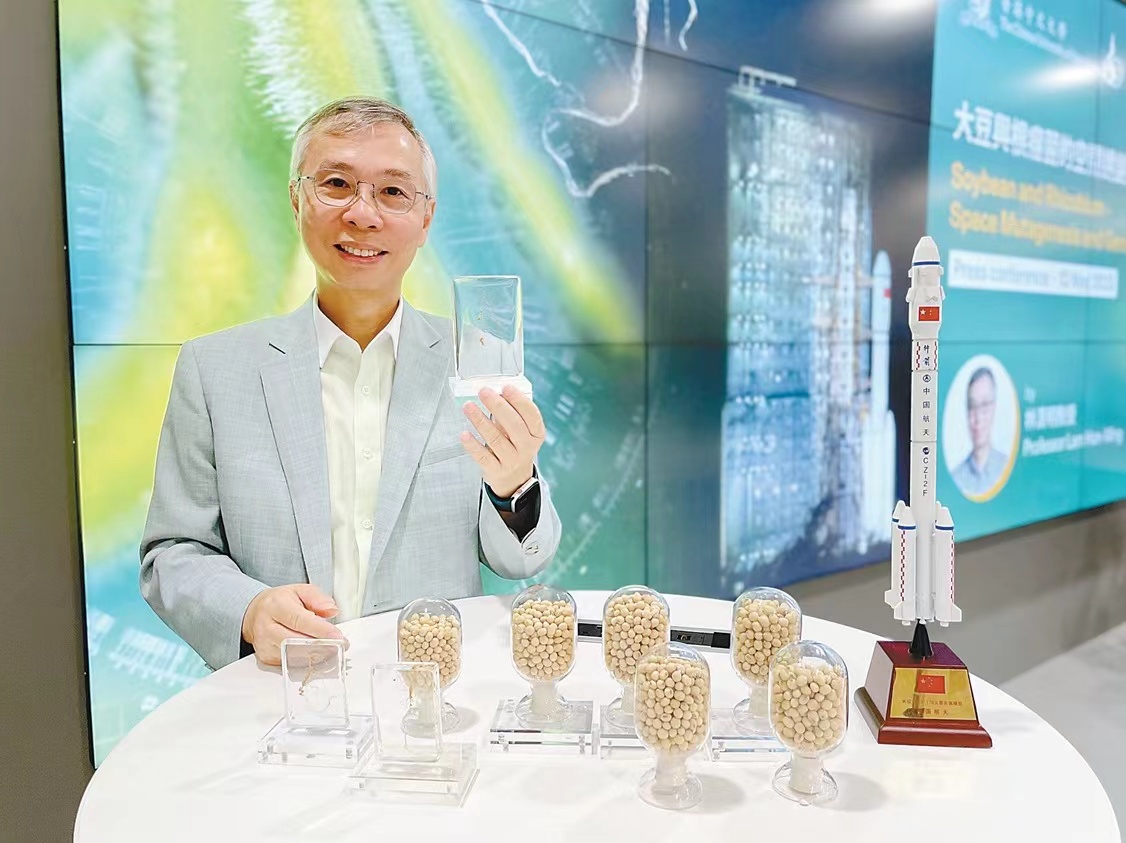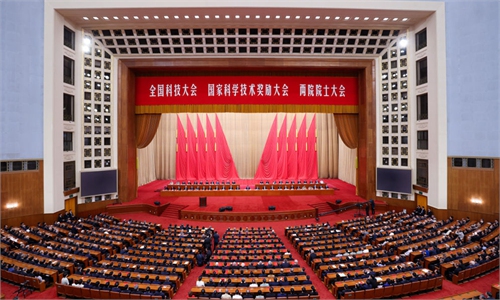
The State Key Laboratory of Agrobiotechnology in the Chinese University of Hong Kong, on July 15, 2024 Photo: Zhang Weilan/GT
Recently, a research team from a Chinese university successfully sent samples of soybean bacteria to the nation's Tiangong Space Station via the Tianzhou-6 cargo spacecraft. The project is the first Hong Kong agricultural research project to be launched into space, opening a new chapter for the integration of aerospace and agricultural technology.
"The experiment although small in the grand scheme of scientific research, for our research team in Hong Kong, it represents a significant milestone that will pave the way for advancements in agricultural technology. Being part of this esteemed space experiment provides us with the opportunity to showcase our research capability on a national level," said Hong Kong-based biologist Lam Hon Ming.

Lam Hon Ming, director of State Key Laboratory of Agrobiotechnology at the Chinese University of Hong Kong Photo: Courtesy of the Chinese University of Hong Kong
Lam, the project's chief scientist, told the Global Times that the experiment represents significant achievement in agricultural innovation in Hong Kong, while also fostering collaboration between scientific communities in Hong Kong and the Chinese mainland. "We are proud to be contributing to such groundbreaking and important scientific endeavors."
According to Lam, the experiment aims to discover how soybean seeds and nitrogen-fixing bacteria mutate in space conditions, opening the door to new advances in agricultural technology that could make soybean farming more resilient to climate change.
Lam and his team are currently studying analysis of the specimens on their return to explore how their mutation mechanisms behave in space and hope that could offer valuable knowledge for potential applications in space agriculture, such as cultivating crops on other celestial bodies or in space stations.
"Perhaps, in the future, we can explore the possibility of cultivating soybeans in extraterrestrial environments such as the Mars, the Moon, and outer space," he said.
Lam is also a director of State Key Laboratory of Agrobiotechnology at the Chinese University of Hong Kong, a national-level research team approved by the Ministry of Science and Technology of China.
He said the project could also contribute to the country's overall food security. The key to development of China's agricultural sector lies in harnessing the power of science and technology, given that 80 percent of the country's demand currently imported because of a shortage of arable land, Lam noted.
"Our long-term vision is to combine China's most advanced aerospace technology with the most important food security research, use space projects to promote close ties between Hong Kong and the mainland, and establish an international innovation and technology hub that engages with the world," Lam said.
Limited land resources and technological gaps in China's soybean industry have led to lower productivity levels when compared to the United States. However, as China continues to invest in research and development, the gap between China and the US in soybean production is expected to narrow, paving the way for a more competitive agricultural sector in the future.
Working on soybean research for more than two decades, Lam is committed to promoting sustainable agricultural development through his research. Through identification and characterization of key genes from elite germplasms that may enhance adaption to biotic and abiotic stresses, Lam envisions integrating cutting-edge academic technology with traditional knowledge from farmers to promote sustainable agriculture.
In 2014, his team successfully identified and cloned a salt-tolerant gene from wild soybean, which paved the way to improving agriculture on marginal lands. Lam also collaborated with scientists in Northwest China's Gansu Province and successfully developed three new stress tolerance soybean cultivars called Longhuang 1, Longhuang 2, and Longhuang 3, with traits such as high-yield, high-quality and high-tolerance for salt and drought.
From 2016 to 2023, the soybeans had been planted in an area spanning approximately 1.18 million mu (78,667 hectares) in Gansu, delivering an additional income of 97 million yuan ($13.6 million) to local farmers.
Recalling his partnership with his Gansu counterpart Zhang Guohong, which have yielded fruitful results, Lam said "there is significant potential to grow our business in the Guangdong-Hong Kong-Macao Greater Bay Area."
"With its large population, thriving agricultural market, and advanced food processing technology, the Greater Bay Area offers numerous opportunities for our products. By establishing a sustainable ecosystem that encompasses production, processing, and sales in this region, we can drive economic growth and create a model for sustainable agricultural development," Lam said.


